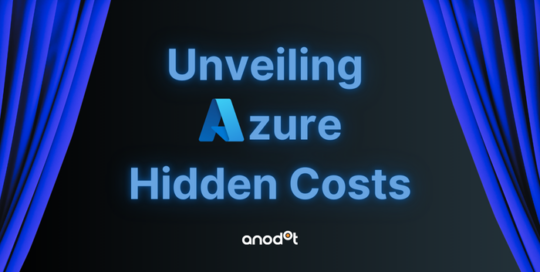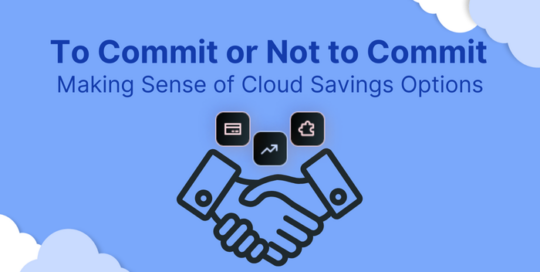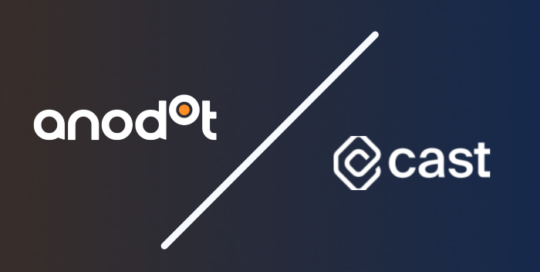CUDOS is one of the six specialized dashboards, in the AWS Cloud Intelligence Dashboards framework. The Cloud Intelligence Dashboards framework is focused on providing comprehensive usage and cost insights for AWS resources. It is a very crucial tool that provides deep insights that can be used to optimize AWS infrastructure.
In this article:
Features of AWS CUDOS
The features of the AWS CUDOS dashboard are:
Usability: CUDOS is built on Amazon Quicksight, a cloud-based serverless intelligence platform that can be used to create visualizations and dashboards. Due to this fact, CUDOS is easy to use due to its native connectivity.

Marketplace Connectivity: CUDOS can help track cloud spending and identify the scope for optimizations for AWS Marketplace products.
Cost Optimization Recommendations: CUDOS is not only a visibility dashboard, it also analyzes cloud deployments and provides some useful recommendations for cost optimizations. The in-depth recommendations even cover things like recommending to right-size instances in case they do not match the requirements and are either too large or too small for the workload.
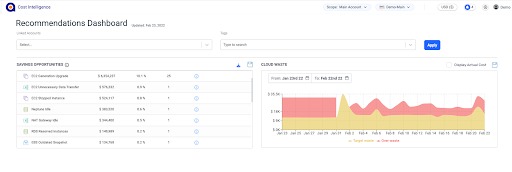
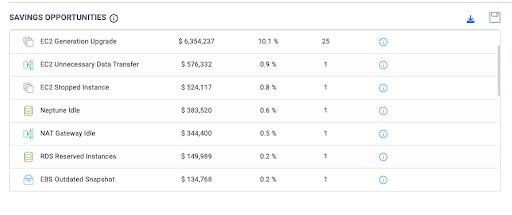
Operational Metrics: CUDOS visualizes operational metrics such as inter-AZ data transfer.
Granularity: CUDOS not only provides high-level cost summaries but it also provides resource-level granularity. This helps to drill down to the resource level to see which resource is a cost centre and how it can be optimized.

Benefits of CUDOS
The benefits of CUDOS are:
Cost Optimization: CUDOS helps identify and resolve inefficiencies in the system, thus decreasing AWS infrastructure costs.
Attain Operational Insights: CUDOS provides operational insights that are extremely useful in identifying performance bottlenecks. This helps in addressing these issues preemptively.
Improve Resource Utilization: CUDOS can help you identify surplus resources and ensure that your resources are appropriately utilized as per workload and are not sitting idle, costing money.
Infrastructure Optimization: CUDOS provides detailed information about your AWS infrastructure that helps in more informed decision-making related to your infrastructure.
Security: CUDOS can help identify potential security concerns so that they can be addressed promptly.
Even though the CUDOS dashboard provides useful insights still, there are major gaps in its offerings, such as – no proactive anomaly detection, no multi-cloud support etc. These gaps can be overcome by using FinOps tools such as the Andot Cloud Cost Management platform. Anodot’s Cloud Cost Management tool provides visibility and control of AWS billing at a granular level that helps in Cloud Cost Optimization.
Cloud Cost management using Anodot
Anodot is a FinOps platform that provides detailed information about your KPIs. Its Cloud Cost solutions provide end-to-end visibility inside your company’s cloud infrastructure, providing recommendations to stay on top of your cloud spend and improve your infrastructure’s efficiency.
Some key features of the platform are:
Cost Reduction: Anodot provides actionable recommendations for your cloud infrastructure which your DevOps team can use to optimize your cloud deployments, thus significantly reducing costs.
Cost Allocation: Anodot’s FinOps tools provide granular details that can be used to improve your cloud spend. This can be done by grouping and allocating spend by business unit, by services, or by teams.
Multi-cloud Visibility: Anodot provides multi-cloud visibility by seamlessly combining all your cloud spending in a single platform. Anodot can optimize your cloud spending and resource allocation across AWS, GCP, and Azure.
FinOps Benefits: Best FinOps practices can be followed using Anodot’s tools. Anodot’s platform provides AI-driven near-real-time forecasting which gives you a real-time picture of your cloud spend and helps you to avoid unforeseen costs.
Granular Insights: Anodot provides granular insights into Kubernetes deployments. These drill down up to pod level. No other cloud optimization platform provides such detailed insights.
Anodot’s platform is backed by state-of-the-art Artificial Intelligence and Machine Learning models. These models leverage deep learning to optimize cloud cost forecasting, enabling businesses to anticipate unforeseen costs and prepare beforehand to keep cloud costs in check.
Anodot Platform vs AWS CUDOS
Scope and Functionality: The AWS CUDOS platform has limited scope and primarily focuses on AWS cost and usage and neglects proper health monitoring and detection at a product/service level, whereas Anodot provides broader and drilled-down capabilities that help in the identification of problems preemptively before they impact performance or end up becoming cost centers.
Multi-Cloud Support: As it is an AWS native service, it only covers AWS, whereas Anodot can handle multi-cloud environments and provides you with a cohesive picture of your cloud spending across Amazon Web Services(AWS), Google Cloud Project(GCP) and Microsoft Azure.
Anomaly Detection: AWS CUDOS follows a reactive approach to issues i.e., it mainly identifies anomalies after they occur, and you often need to do manual investigations to identify and resolve the issue, whereas the Anodot platform uses a proactive anomaly detection approach and provides you actionable recommendations preemptively.
FAQS
What is CUDOS?
CUDOS stands for Cost and Usage Dashboards Operations Solution. It is a dashboard present inside the AWS Cloud Intelligence Dashboards framework.
What is CUDOS used for?
The CUDOS dashboard provides detailed cost and usage insights for your AWS resources, with both high-level overviews and drill-down capabilities to view granular resource-level data.
What are the benefits of the Anodot platform over AWS CUDOS?
The benefits of Anodot over AWS CUDOS are:
- The Anodot platform supports multi-cloud environments whereas AWS CUDOS is native AWS only.
- The Anodot platform uses a proactive anomaly detection approach as compared to AWS CUDOS’s reactive approach.
- Anodot provides broader and more drilled-down capabilities that help identify problems preemptively.

Melissa Abecasis
Director of Customer Success & Sr. Cloud FinOps Engineer, Anodot
Melissa brings a wealth of experience in customer success, cloud financial operations, and program management, with a demonstrated work history in the Information Technology and healthcare industry.
TIPS FROM THE EXPERT
1. Leverage custom tags for resource mapping
CUDOS uses tags to organize costs. Ensure your tagging strategy is robust and enforced consistently across all resources to get meaningful insights into cost allocation and optimization. Regularly audit and clean up unused or inconsistent tags.
2. Automate resource right-sizing based on CUDOS insights
Use the recommendations provided by CUDOS to trigger automated scaling or instance right-sizing scripts. Tools like AWS Lambda can automate instance resizing, reducing the risk of prolonged overspending.
3. Correlate usage data with workload efficiency metrics
Don’t just focus on cost data; combine CUDOS metrics with AWS CloudWatch or other monitoring tools to evaluate whether high costs correspond to inefficient workloads or suboptimal application performance.
4. Plan for capacity reservations with capacity reservations insights
If you utilize capacity reservations, integrate AWS EC2 Capacity Reservations metrics into CUDOS insights. This can help optimize reserved instances or on-demand burst capacity planning, avoiding wasted capacity and unnecessary costs.
5. Use predictive analytics for proactive scaling
Enhance CUDOS data by integrating third-party predictive analytics tools to anticipate demand spikes or drops. This will help you proactively scale infrastructure up or down, optimizing costs in advance of actual demand.
Book your Demo today!
See how Anodot delivers FinOps visibility and deep savings across multi-cloud and K8s


